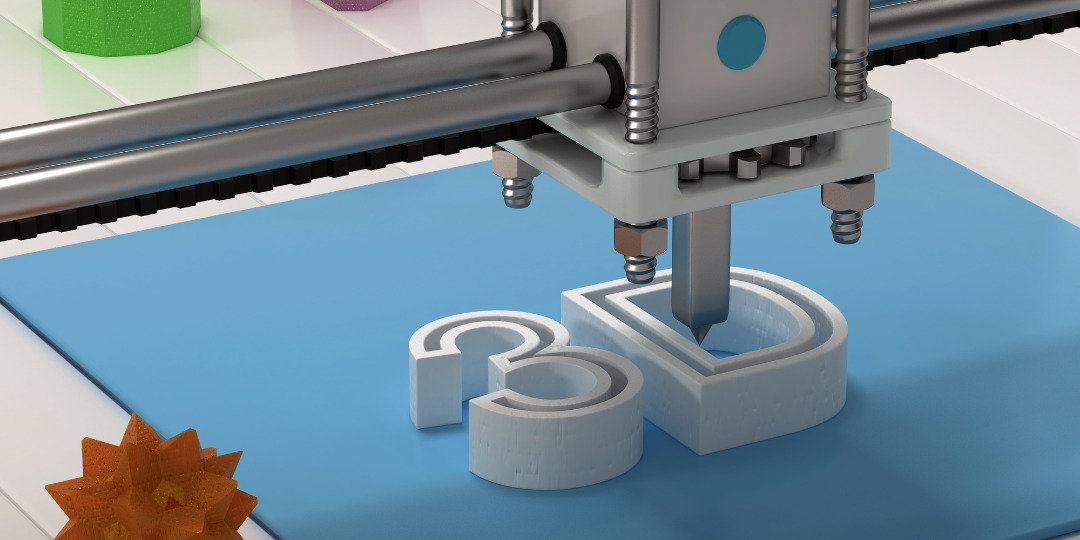Exploring the Future of the 3D Printing Industry through Patent Filings

K. Saranya – Patent Associate, IP Practice
Introduction:
The 3D printing industry has witnessed remarkable growth and innovation since its inception. With advancements in technology and a widening array of applications, 3D printing, also known as additive manufacturing, has become a pivotal tool across various sectors, including aerospace, healthcare, automotive, and consumer goods. As we look ahead, patent filings serve as a lens through which we can glimpse into the future trajectory of this dynamic industry.
Also, Patent filings can offer valuable information about the direction in which the 3D printing industry is heading. By analyzing trends in patent applications, we can gain insights into the technologies and innovations that are likely to shape the future of 3D printing.
Patents as a Forecasting Tool:
Patents offer invaluable insights into the future of technology. They not only represent the culmination of inventive efforts but also provide a roadmap for the direction in which a particular industry is heading. By analyzing trends in patent filings, we can identify emerging technologies, anticipate market shifts, and gauge the competitive landscape within the 3D printing sector.
Key Trends in 3D Printing Patents:
Material Innovation:
Novel materials play a crucial role in expanding the capabilities of 3D printing. Recent patent filings indicate a surge in research and development focused on advanced materials such as biocompatible polymers, metal alloys, and composite materials with enhanced mechanical properties. These materials pave the way for applications in personalized medicine, aerospace components, and high-performance industrial parts.
Multi-Material Printing:
Multi-material printing enables the fabrication of complex structures with diverse properties in a single process. Patent filings reveal a growing interest in techniques that enable precise control over the deposition of multiple materials, including polymers, ceramics, metals, and electronics. This capability unlocks new opportunities in hybrid electronics, smart devices, and customized products tailored to specific functional requirements.
Miniaturization and Microfabrication:
Shrinking the scale of 3D printing opens up possibilities for microfabrication and the production of miniaturized components with intricate geometries. Patents related to microscale 3D printing techniques, such as two-photon polymerization and electrohydrodynamic printing, point towards applications in microelectronics, biomedical devices, and microfluidic systems for lab-on-a-chip diagnostics.
Patent filings also point towards advancements in 3D printing technology that will allow for faster printing speeds and larger build volumes. Companies are working on improving the efficiency and productivity of 3D printers, enabling them to produce complex parts and prototypes in a fraction of the time it currently takes. This indicates that the future of 3D printing will see increased adoption in mass production and industrial applications.
Sustainability and Recycling:
As sustainability becomes a paramount concern, patent filings reflect efforts to develop eco-friendly 3D printing technologies and recyclable materials. Innovations in closed-loop recycling systems, bio-based resins, and additive manufacturing processes that minimize waste showcase the industry’s commitment to environmental stewardship. These advancements align with the growing demand for sustainable manufacturing practices across sectors.
Automation and Digitalization:
Automation and digitalization are reshaping the 3D printing landscape, enabling seamless integration with digital design tools, robotic systems, and AI-driven optimization algorithms. Patents related to automated part orientation, adaptive slicing algorithms, and cloud-based printing platforms signify a shift towards more efficient, agile, and interconnected manufacturing workflows.
Companies are developing smart 3D printers that can be monitored and controlled remotely, as well as AI algorithms that optimize printing processes and predict potential issues. This indicates that the future of 3D printing will involve a more interconnected and intelligent manufacturing ecosystem, and enhance productivity, scalability, and accessibility in additive manufacturing.
Implications for the Future:
The trends observed in 3D printing patent filings herald a future characterized by increased customization, efficiency, and sustainability. As technology continues to evolve, 3D printing is poised to revolutionize industries ranging from healthcare and aerospace to consumer electronics and beyond. However, challenges such as regulatory barriers, intellectual property disputes, and material limitations remain to be addressed.
According to an EPO study, 3D printing patent filings increased eight times quicker over the previous ten years than the average for all technologies. The average annual rate of growth in patents for additive manufacturing, or 3D printing, was 26.3%. Since 2001, more than 50,000 international patent families pertaining to 3D printing technologies have been filed worldwide. Universities and public research organizations accounted for about 12% of these filings, nearly twice as many as they typically do for other technologies. With 40% of all foreign patent families pertaining to 3D printing, the US holds the top rank, followed by Europe with 33%.
Conclusion:
The future of the 3D printing industry holds tremendous promise, driven by ongoing innovations fueled by patent filings. By leveraging advanced materials, multi-material printing capabilities, microfabrication techniques, sustainability initiatives, and digitalization trends, 3D printing is poised to redefine manufacturing paradigms and unlock new opportunities for innovation across sectors. As stakeholders navigate this dynamic landscape, collaboration, investment in R&D, and strategic partnerships will be critical in realizing the full potential of additive manufacturing technologies.
Bibliography:
https://www.voxelmatters.com/epo-study-shows-3d-printing-patent-filing-skyrocketed-in-last-decade/.



